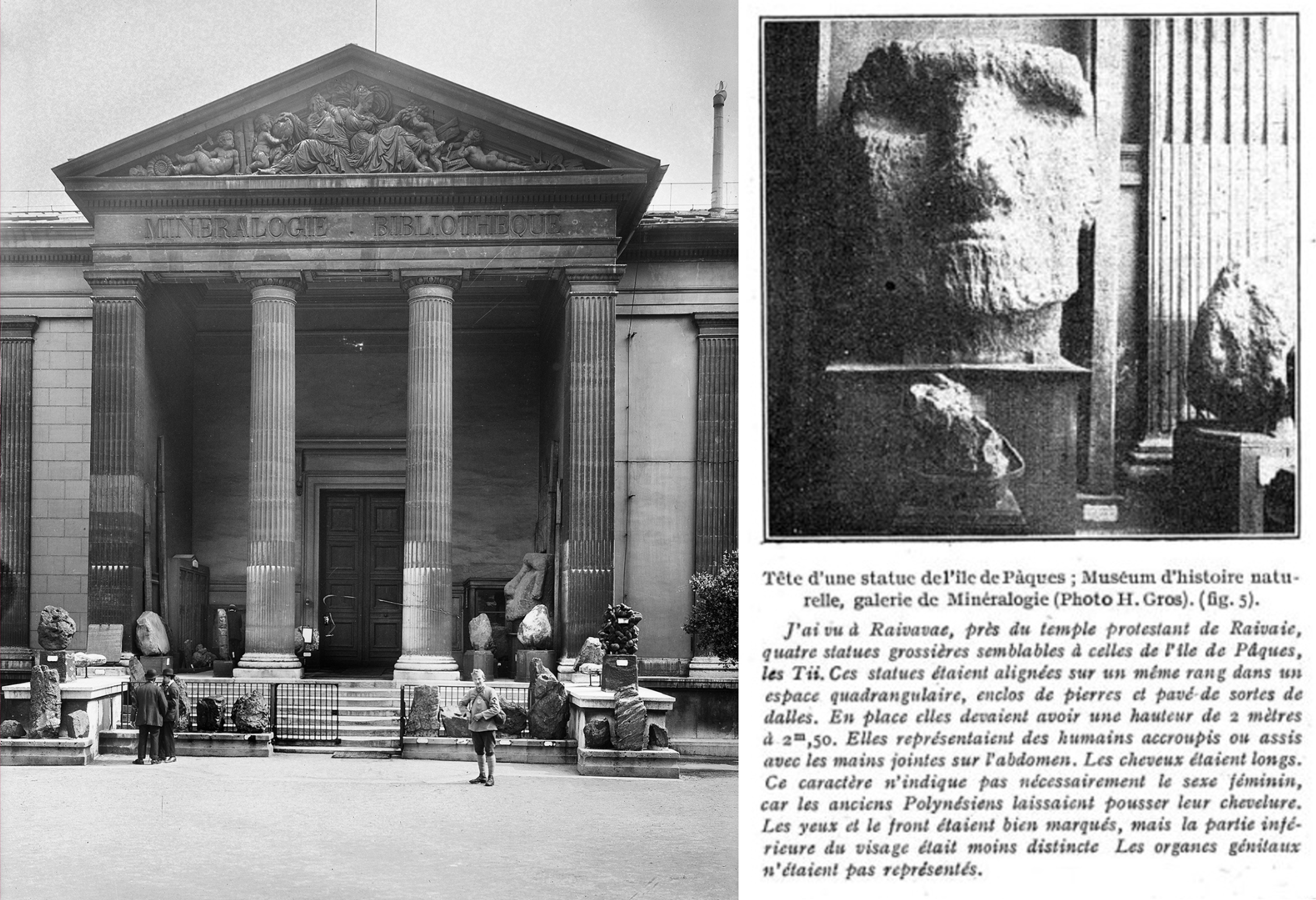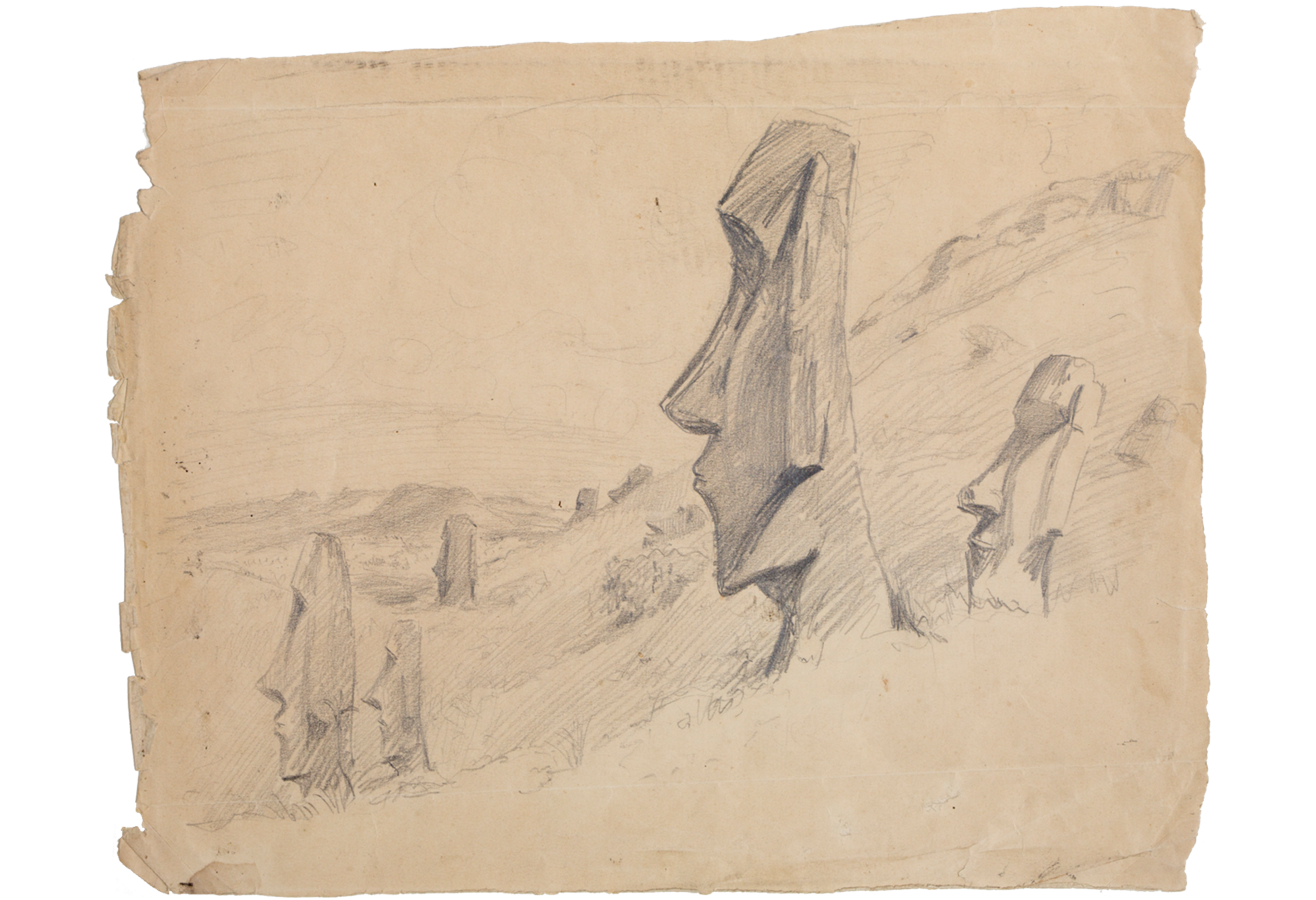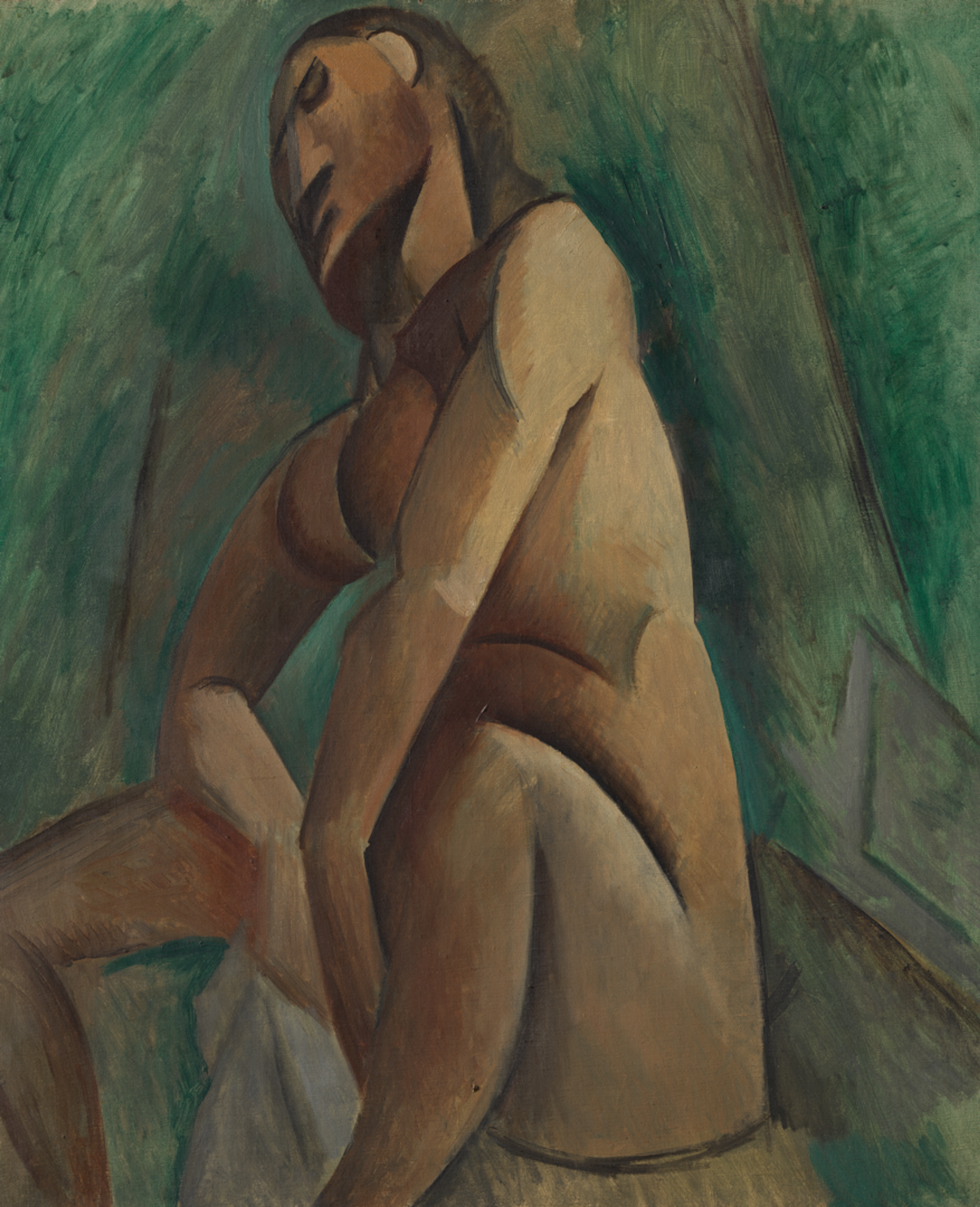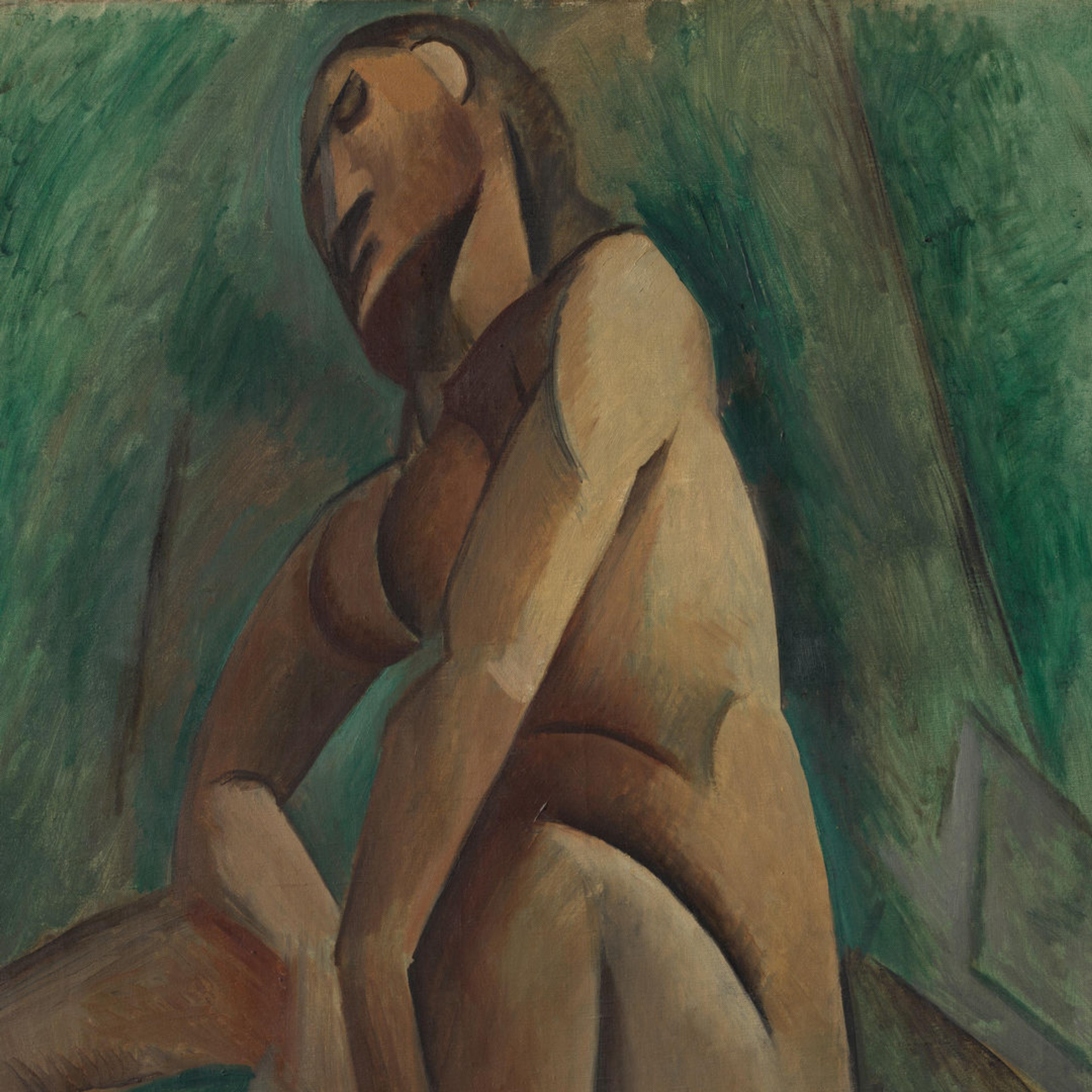In her 1933 memoirs Fernande Olivier, Picasso’s mistress from 1904–12, recounted walks the sculptor Georges Deniker organized in Paris at the Jardin des Plantes during her time with Picasso: “He took us there several times at night. Everything would become so mysterious that we were almost afraid. The garden felt to me as though it were full of traps. At every step and every moment I thought I could see a wild animal, a bird of prey, a reptile crouched in the shrubbery. But those walks had a special kind of charm, disturbing, troubling, and we gladly repeated them.”

(left) Facade of the Musée d’histoire naturelle, Jardin des Plantes, Pavillon de Minéralogie Bibliothèque, Paris, with the head from Easter Island under the peristyle at right, June 26, 1917. Collection Département d’Histoire de l’Architecture et d’Archéologie de Paris, Direction des Affaires Culturelles-Mairie de Paris. © DHAAP/Lansiaux. Photo: Charles Lansiaux
(right) Head of an Easter Island statue. Photo: H. Gros. Reproduced in Variétés,no. 74 (1929)
Within the Jardin des Plantes, a strange and unexpected object could not be ignored by the young explorers: a monumental head from Easter Island. It was displayed at the time under the portico of the mineralogy gallery at the Musée d’histoire naturelle. This head had been brought to France by the Admiral François-Théodore de Lapelin, squadron leader of the frigate La Flore, which docked at Easter Island from January 4 to 7, 1872. The writer Pierre Loti, then a young military doctor, also took part in the voyage, making many drawings of the sculptures at Easter Island in situ. He wrote of them in his diary: “No eyes, only deep cavities under the forehead, under the vast and noble arch of the eyebrow, and yet they seem to be looking and thinking.”

Pierre Loti (Julien Viaud). Sketch of statues from Easter Island, on the slope of the Ronororaka volcano, 1872. Musées municipaux de Rochefort. © Musées-municipaux Rochefort 17
One must imagine the monumental statue at the Musée d’histoire naturelle with its enigmatic gaze, transformed by the mysteries of the night, towering overhead, like the figure in Picasso’s painting Seated Female Nude. Its features seem to be a recollection of the stone head, a head for which Picasso did not refrain from inventing a body. In his canvas, the artist outlined a massive body, as if carved from stone with a billhook. Crouching down, ready to leap like an animal, the figure turns into an inscrutable and perhaps brutal being.

Pablo Picasso. Seated Female Nude, Winter 1908. Oil on canvas, 28 7/8 x 23 3/4 in. (73.3 x 60.3 cm). Leonard A. Lauder Cubist Collection, Purchase, Leonard A. Lauder Gift, in celebration of the Museum's 150th Anniversary, 2018 (2018.759).
